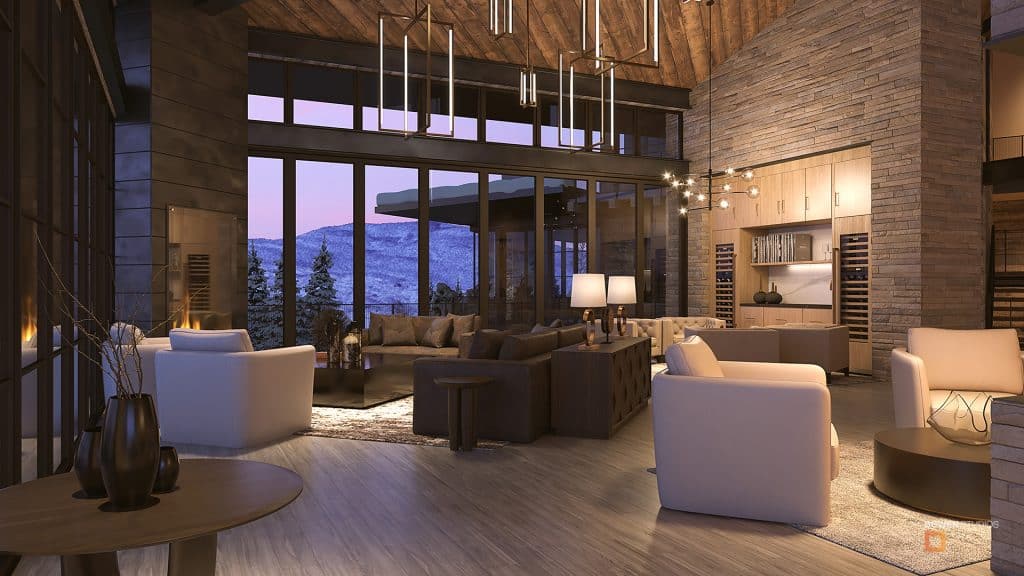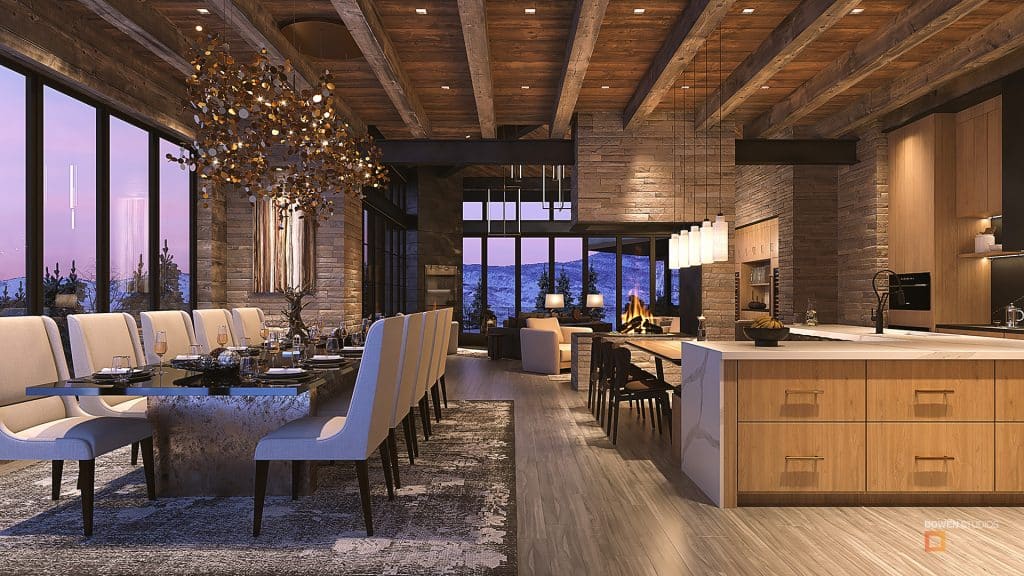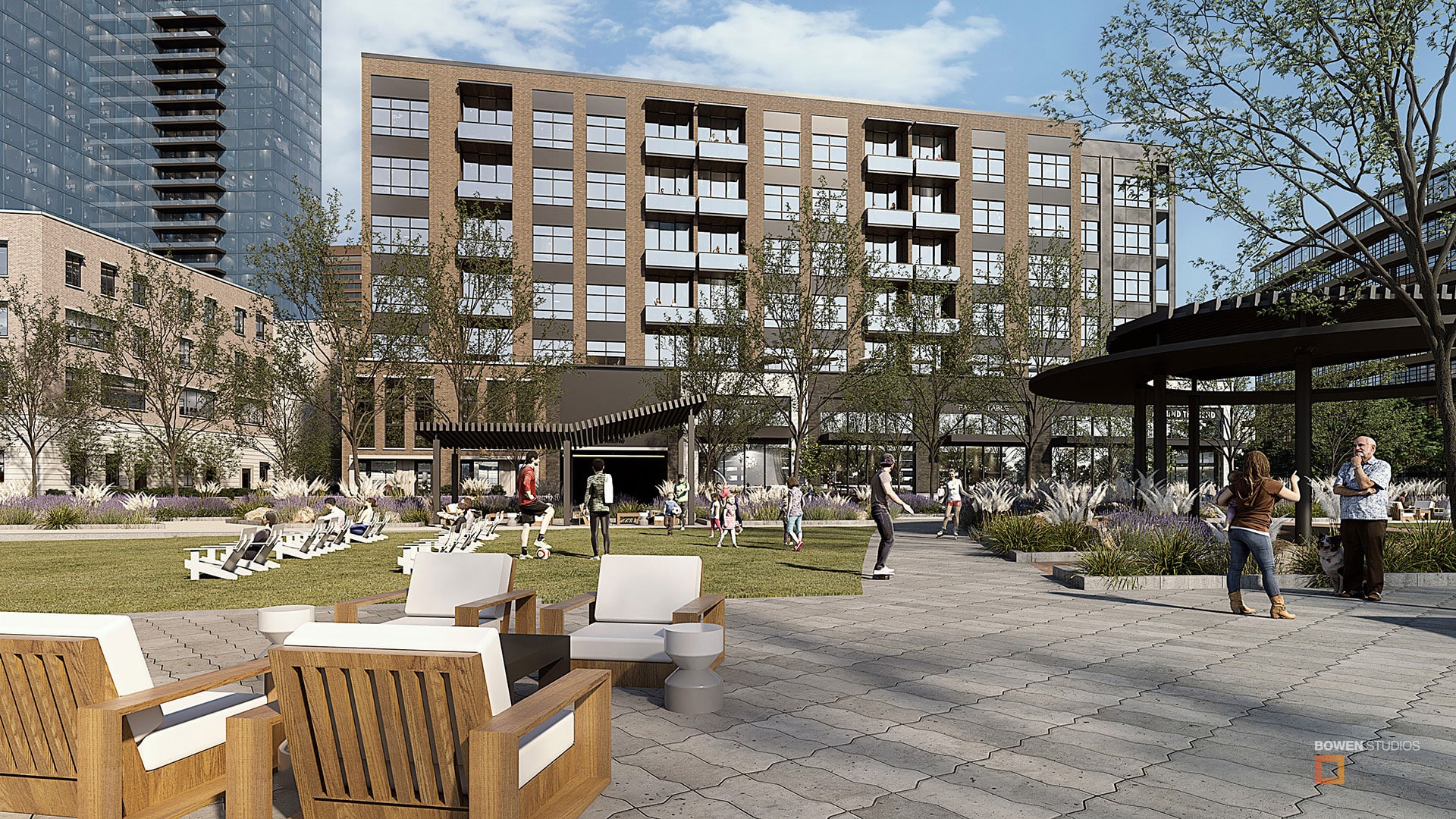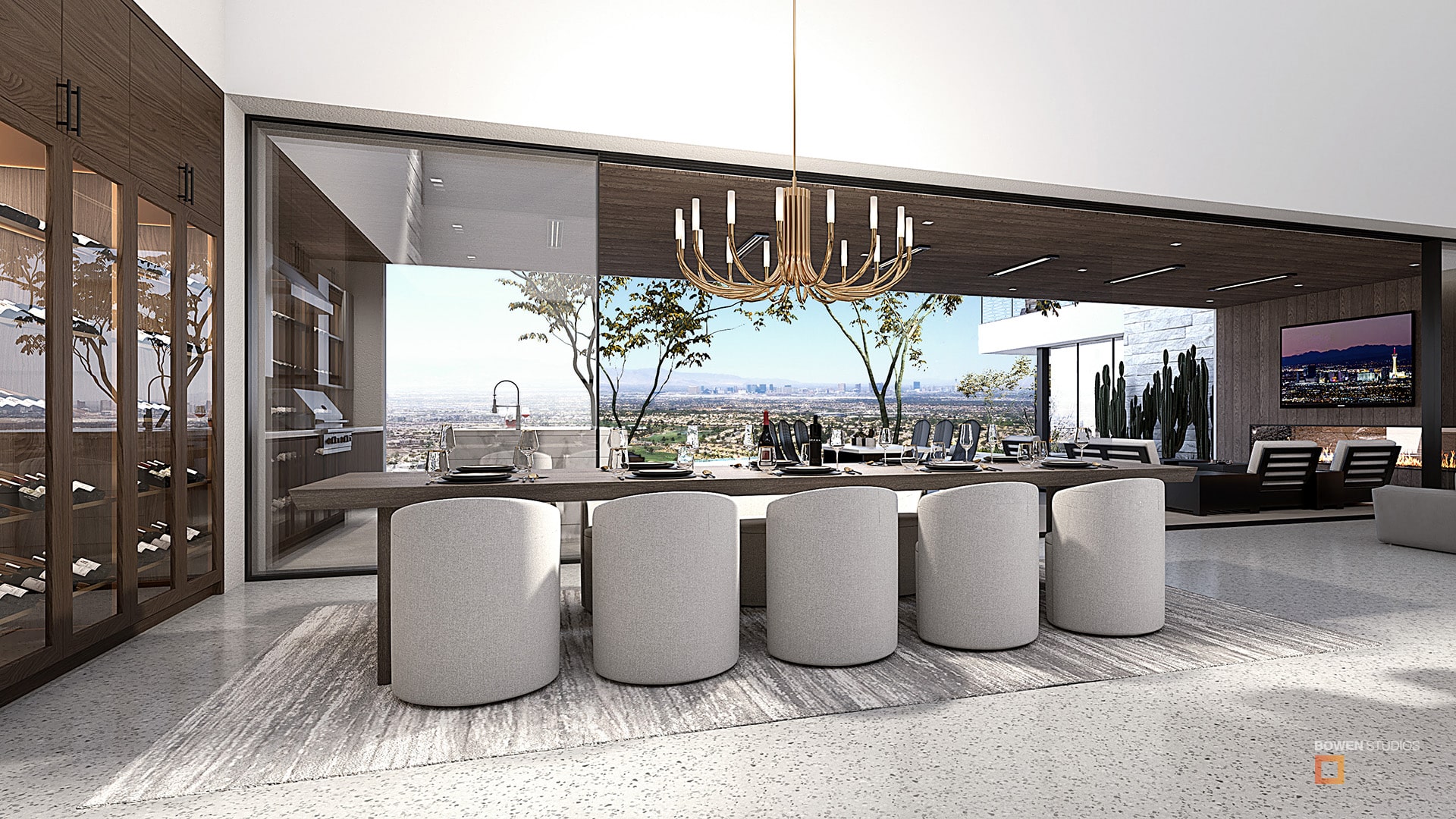Have you ever seen a finished interior design project that looked nothing like what you had imagined? That kind of misalignment can lead to wasted time, budget overruns, and lost trust between designers and clients. That’s where 3D renderings come in.
These digital visualizations are more than eye-catching images. They’re powerful tools that help clients and designers stay on the same page, make confident decisions, and bring design ideas to reality. In today’s competitive design industry, interior renderings are essential for accuracy, client engagement, and professional presentation. They allow designers and clients to bridge the gap between concept and reality, ensuring everyone is aligned long before a single piece of furniture is ordered or a wall is painted.
The Evolution of Interior Design Visualization and Why It Matters
Traditionally, interior designers relied heavily on mood boards and hand-drawn sketches to convey their ideas. While these methods provided a foundational understanding of spatial layouts and design elements, they often failed to deliver the depth and realism necessary for clients to grasp the envisioned space fully.
The introduction of computer-aided design (CAD) software marked a significant advancement, allowing for more precise and scalable designs. However, it was the emergence of 3D rendering technology that truly revolutionized the field. With 3D rendering, interior designers can produce detailed, lifelike images that accurately depict lighting, textures, materials, and spatial relationships, offering clients an immersive preview of their future spaces.

Why 3D Renderings Are Indispensable in Modern Interior Design
These renderings aren’t just useful, they’re critical. Interior design renderings help bring clarity to complex projects and avoid costly miscommunications.
- Enhanced Visualization and Realism:
3D rendering enables designers to create highly detailed and realistic representations of interior spaces. Clients can see exactly how different elements, such as furniture, color schemes, lighting, and materials, will come together in the final design. This level of detail helps set accurate expectations and allows clients to make informed decisions. - Improved Client-Designer Communication:
3D renderings are a universal language, bridging the gap between technical design concepts and client understanding. By presenting designs visually, clients can easily comprehend and provide feedback on proposed ideas, leading to a more collaborative and efficient design process. - Design Flexibility and Experimentation:
With 3D rendering, designers can experiment with various design elements without physical alterations. They can quickly test different layouts, materials, and color palettes to explore multiple design possibilities and identify the most suitable solutions for a space. This adaptability fosters creativity and innovation in design. - Cost and Time Efficiency:
Identifying and addressing potential design issues during the rendering phase can prevent costly changes during construction. By visualizing the result beforehand, designers and clients can make necessary adjustments early in the process, ensuring the project stays within budget and on schedule. - Enhanced Marketing and Presentation:
High-quality 3D renderings are powerful marketing tools. Designers can showcase their portfolios with photorealistic images that attract potential clients and demonstrate their expertise. Additionally, these visuals can be used in presentations, brochures, and online platforms to promote design services effectively. - Facilitation of Virtual Reality (VR) and Augmented Reality (AR) Experiences:
Integrating 3D renderings with VR and AR technologies offers clients immersive experiences. Clients can virtually walk through their future spaces or see how specific design elements will look in their current environment, enhancing their understanding and engagement with the project. - Accurate Material and Lighting Representation:
3D rendering allows for precise depiction of materials and lighting conditions, helping clients understand how different elements will interact in the space. This accuracy ensures that the final outcome aligns with the client’s expectations and reduces the likelihood of dissatisfaction. - Streamlined Approval Processes:
Clear and detailed 3D visuals can expedite client approvals. When clients can see a realistic representation of the proposed design, they are more likely to make prompt decisions, reducing delays in the project timeline. - Error Detection and Risk Mitigation:
By visualizing the design in detail before implementation, designers can proactively identify and address potential issues. This foresight minimizes risks and ensures a smoother execution phase. - Enhanced Client Satisfaction:
Providing clients with a clear and realistic preview of their space fosters trust and confidence in the designer’s vision. When clients can visualize the outcome and have input throughout the design process, they are more likely to be satisfied with the final result.
Why 3D Renderings Are No Longer Optional in Interior Design
In an industry where aesthetics, precision, and experience matter, 3D renderings have become a standard expectation. Whether working with residential clients or commercial developers, interior designers are often judged by their ability to visualize and present their ideas clearly. Without 3D visuals, many clients feel disconnected from the process, and that disconnect can lead to delays, budget overruns, or dissatisfaction.
Today, thanks to portable devices and cloud-based design software, 3D renderings can now come to life right in front of the client, in their own home. Imagine an interior designer sitting at a client’s kitchen table, adjusting finishes, furniture layouts, or lighting scenes in real time. One designer shared a story of a recent project where the client was unsure about a bold kitchen backsplash. By visualizing it instantly in the context of their actual layout, the client approved the change on the spot and sparked a whole new conversation about using complementary textures in adjacent rooms.
This kind of interactive collaboration accelerates exploration and empowers clients to make informed decisions quickly and confidently. It turns design reviews into exciting, creative sessions instead of stressful guesswork. 3D interior design renderings build trust, encourage early buy-in, and eliminate costly miscommunication. In today’s fast-paced, designer-oriented world, they’re not just helpful but essential.
If you’re still wondering how these visuals can transform your workflow or client presentations, start by asking the right Interior Design Rendering Questions. The answers may be the key to unlocking your next level of design success.

Applications of 3D Rendering in Interior Design
- Residential Projects: 3D architectural renderings allow homeowners to visualize renovations or custom home designs fully. Instead of relying on abstract blueprints, clients can see detailed, lifelike representations of room layouts, material finishes, lighting, and furnishings. This helps them make confident decisions about materials, color schemes, and spatial arrangements while reducing miscommunication with architects and contractors.
- Commercial Spaces: Businesses can preview office layouts, retail environments, or hospitality spaces, ensuring the design aligns with brand identity and functional requirements. These visualizations support better space planning by allowing designers to test furniture placement, traffic flow, and functionality.
- Real Estate Marketing: Developers get a competitive edge by bringing yet-to-be-built properties to life. Whether for residential or commercial developments, these real estate visuals help potential buyers and investors emotionally connect with a property before it physically exists. Prospective clients can explore layouts, finishes, and views from a particular window. Renderings can be used in online listings, brochures, billboards, and sales presentations, making them versatile assets that accelerate interest and drive pre-sales.
- Virtual Staging: Wow people by transforming empty properties into beautifully furnished spaces, without the expense and effort of physical staging. Through photorealistic digital design, buyers can visualize how a home or office might look when lived in, which makes listings more engaging. It’s also highly flexible, allowing sellers to tailor the decor style to appeal to different target audiences.
How AI Is Shaping the Future of Interior Design Rendering
Artificial intelligence is rapidly transforming how 3D renderings are created, interpreted, and utilized in interior design. No longer confined to manual modeling and time-intensive detailing, designers can now leverage AI-powered tools to accelerate workflows, boost creativity, and deliver even more personalized experiences.
- AI-Powered Design Generation:
AI can now analyze client preferences, spatial dimensions, and design trends to generate layout suggestions, recommend materials, and even create full concept renderings in a fraction of the time it used to take. This doesn’t just speed things up, it introduces a new level of data-informed design that can improve aesthetics and functionality. - Smarter Customization and Personalization:
With machine learning, AI can recognize patterns in user choices and adapt visual outputs accordingly. That means a designer could input basic client information and receive design variations tailored to the client’s style, needs, and lifestyle habits. Over time, these systems can learn from feedback to continuously improve accuracy and style alignment. - Real-Time Rendering Enhancements:
AI algorithms help accelerate real-time rendering by optimizing light behavior, material properties, and scene complexity. What used to require hours of computing time can now be previewed almost instantly, allowing for dynamic, on-the-fly changes during client presentations—no more waiting for the software to catch up. - Integration with Virtual Assistants and Voice Commands:
Imagine modifying the mood lighting in a virtual rendering simply by saying, “Show this room at sunset,” or asking your AI assistant to pull up all recent renders using navy blue accent walls. These capabilities are beginning to appear in next-gen design platforms, making the process more intuitive and less reliant on manual inputs. - The Near Future of AI in Interior Design Rendering:
Looking ahead, AI will continue to evolve toward predictive and generative design tools that respond to input and anticipate needs before they’re expressed. We’ll see platforms that can simulate environmental changes, budget constraints, and material availability in real time, giving designers and clients unprecedented control and clarity from day one.
Ultimately, AI isn’t replacing interior designers, it’s enhancing them. By automating repetitive tasks and generating intelligent suggestions, AI empowers creatives to focus more on vision, storytelling, and human connection. The result? Better designs, faster turnarounds, and more inspired, confident clients.
The New Role of 3D Renderings in Interior Design
The importance of 3D renderings in interior design cannot be overstated. They provide clarity, enhance collaboration, and allow for truly client-centered design experiences. As interior spaces become more personalized and technically complex, the ability to communicate ideas visually with precision and realism in real time is becoming a necessity.
In today’s design world, 3D interior renderings help designers confidently meet expectations. With the rise of AI-driven tools, designers can generate smarter, faster, and more personalized visualizations, taking efficiency and creativity to the next level.
Ready to level up your design process? Contact Bowen Studios and wow your clients from the very first presentation.





